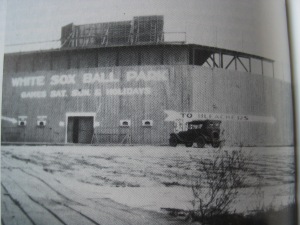
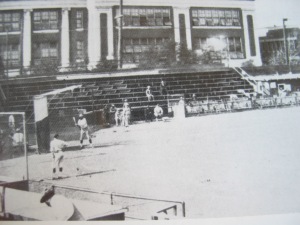
One of the most popular baseball stadiums in Los Angeles was White Sox Park. Located on the corner of 38th St. and Compton Avenue in South Los Angeles, the 7,000 seat park was the home of the California Winter League. Italian American brothers, John and Joe Pirrone, used their earnings from their wholesale fruit business to purchase the land to build White Sox Park in 1924. Joe Pirrone organized the California Winter League to lure Negro League teams to southern California to play against local semi-pro teams and minor league teams, including Japanese American and Mexican American teams. During the 1920s African Americans were barred from playing in Pacific Coast League parks including Wrigley Field and Gilmore Field in Los Angeles. According to William McNeil, “The California Winter League was apparently intended as a showcase for Negro league baseball. White Sox Park, which was strategically located in or near black sections of the city, hosted the majority of league games.”[1] Some of these teams included the Kansas City Royals and Monarchs, Philadelphia Giants, Detroit Giants and Nashville Royal Giants. There were also all-black teams from the sandlots of Los Angeles, such as the Royal Giants, Colored Giants, Monarchs, Stars and many others. McNeil, however, fails to mention that White Sox Park was also the home of Mexican American baseball teams. Mexican American baseball teams and leagues dotted the southern California landscape “working to play, playing to work.” El Paso Shoe Store from San Gabriel fielded one of the strongest teams called, “Los Zapateros,” that played a majority of its games in White Sox Park.[2] Hollywood celebrities, city political figures and the Mexican Consul attended games at White Sox Park.
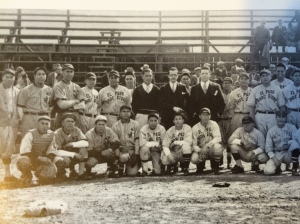

Los Zapateros team was owned and managed by Don Rodrigo Castillo, who founded El Paso Shoe Store when he moved to Los Angeles from El Paso. In an interview with La Opinion, Pirrone praised the athletic abilities of Mexican baseball players and proclaimed “there should be least five to ten players going to the big leagues every year.”[3] He added on a separate interview that “I recognize that many talented ballplayers have not developed to their fullest potential because of limited opportunities. Additionally, fans have not seen them in action because there are no facilities to watch comfortably…for this reason I would be very happy for the Mexican clubs to play in my park.”[4] On May 5th, 1929 Pirrone worked with El Paso Shoe Store to organize “Fiesta Beisbolista,” a double header match with the first pitch thrown by Los Angeles Mexican Consul, Alfonso Pesqueira, followed by a music band and dance.[5] Throughout the 1930s baseball teams from Mexico were invited by Pirrone to play against local Mexican American teams. Los Zapateros also played matches against the Los Angeles Nippons, a nisei baseball team. White Sox Park represents the formation of a nonwhite spatial imaginary in which Mexican Americans, African Americans and Japanese Americans transformed a segregated baseball stadium, produced by racist institutions and practices, into a visionary place of freedom and “where everybody is somebody.” As George Lipsitz argues in How Racism Takes Place, racialized social relations take on their full force and meaning when they are enacted physically in actual places. By the early 1940s the ballpark fell into disrepair and was demolished at the end of World War II to make way for veteran housing project and the Ross Snyder Recreation Center.

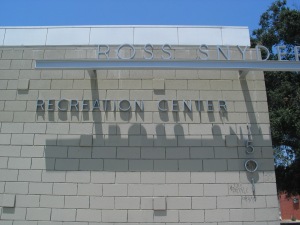
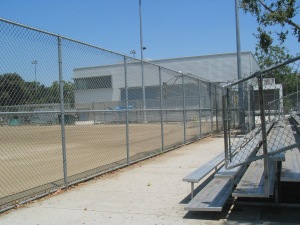
Pingback: Those Eastside Girls: African American Women’s Baseball | The Shadow Ball Express